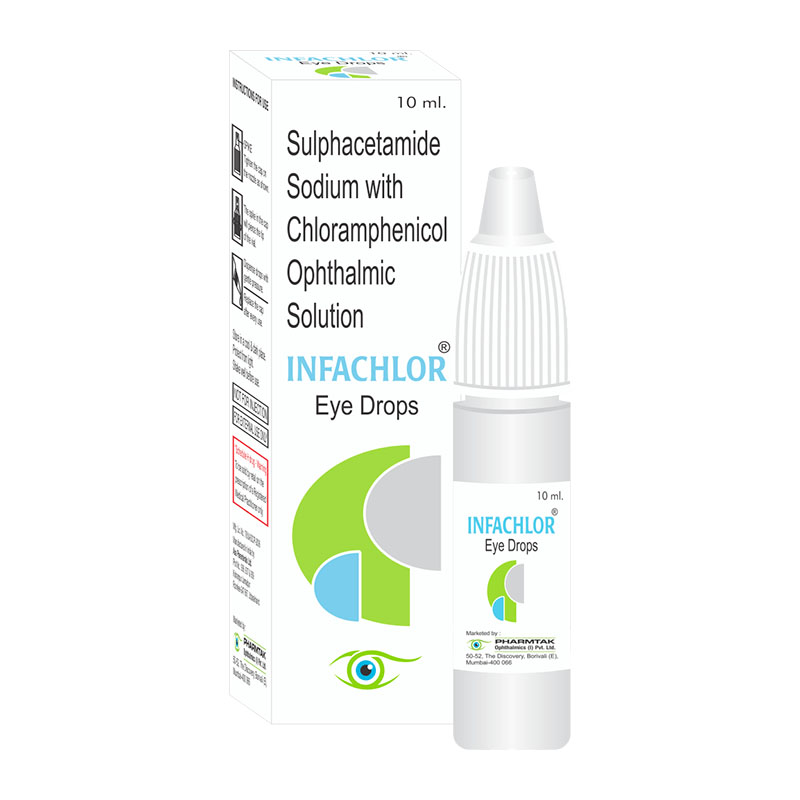Infachlor (Eye Drops)
“We’re committed to delivering outstanding healthcare”
Composition:
Sulphacetamide Sodium 20% Chloramphenicol 0.5%
INFACHLOR EYE DROPS consist of two Bacteriostatic agents that increase the effectiveness of the Eye drops due to the broad spectrum and ensuring full annihilation of the susceptible strains of bacteria infecting the Ocular Surface.
Sulphacetamide Sodium in Infachlor Eye Drops, exerts inhibitory effects on the Dihydropteroate Synthase pathway that catalyses the production of foliate, a necessary component to synthesize DNA , RNA and cell division thus implements the Bacteriostatic effect on the growth of invading bacteria (Gram Positive & Gram Negative). Also, it is assumed to have anti-inflammatory effects on the affected eye.
Chloramphenicol in Infachlor Eye Drops is bacteriostatic and binds to the bacterial ribosome thereby blocking peptidyl transferase responsible for chain elongation in the process of Protein Synthesis thus resulting in bacterial cell death. Having broad spectrum and is active against many bacterial strains including Staphylococcus aureus, Streptococcus pneumoniae, andEscherichia coli.
Bacterial keratitis, blepharitis, acute conjunctivitis and superficial ocular infections caused by susceptible strains.
| Escherichia coli | Staphylococcusaureus |
| Streptococcuspneumonia | Streptococcus (Viridans Group) |
| Haemophilusinfluenzae | Klebsiellaspecies |
| Enterobacterspecies |
Instill a Drop of Infachlor Eye Drops in the affected eye (s) 3-4 Times a day or as directed by the Eye Doctor.
- Do not swallow solution.
- If solution changes color or becomes cloudy, do not use.
- To avoid contamination, do not touch bottle tip on any surface and avoid direct contact with the eye.
- Close the bottle tightly immediately after use.
- Hypersensitivity towards any of the component.
- Growth of Resistant Organisms with Prolonged Use.
Adverse Effect:
Burning, Stinging, Irritation, Itching, Redness, Blurred Vision, Eyelid Itching, Eyelid Swelling, Sensitivity to Light May Occur and allergic reactions are rare cases.





